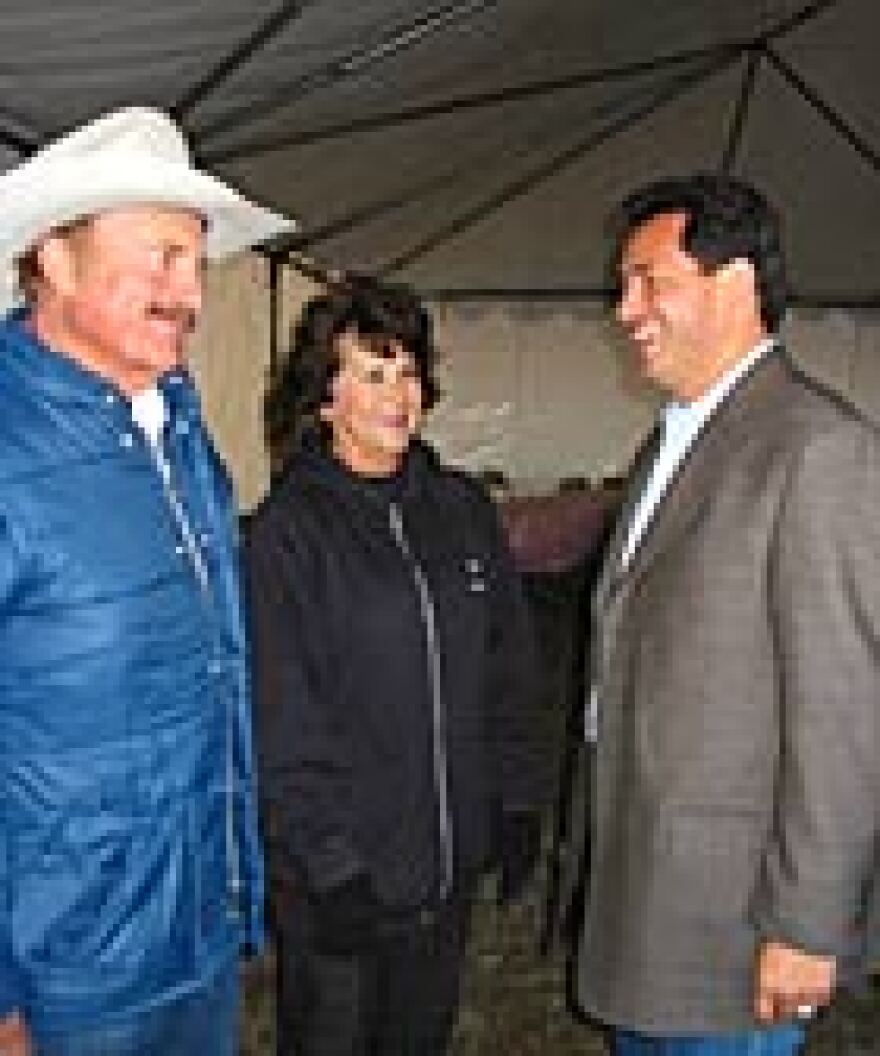



When New Mexico votes Nov. 5, the state will elect a Hispanic governor, because both parties have nominated Hispanic candidates.
The Republican is John Sanchez, a one-term state legislator, a businessman and a former flight attendant. The Democrat is Bill Richardson, who represented New Mexico in Congress for 15 years and went on to serve the Clinton administration as energy secretary and ambassador to the U.N. Less than a week before the election, Richardson is ahead in the polls -- and if the race creates an unusually large Hispanic vote, that could affect two close House races for seats now held by Republicans, says NPR Senior Correspondent Linda Wertheimer.
For All Things Considered, Wertheimer returned to her home state to explore ethnic politics in the Land of Enchantment. In Valencia County, south of Albuquerque, she dropped in on several political rallies, fiestas and matanzas -- literally, killings, where a pig is killed and barbecued -- and found the candidates out in force.
At one fiesta, says Wertheimer, about 200 neighbors gathered on a patio behind a large adobe house to greet Democratic candidates including Richardson, "a big, expansive man in his middle 50s who switched languages in mid-sentence as people came to say hello." Though he leads in the polls, Richardson is campaigning hard in hopes of bringing two Democratic congressmen -- one a Hispanic -- into office with him.
As the fiesta makes clear, "New Mexico is different from other states," Wertheimer says. "More than 42 percent of the state's population is Hispanic... Hispanics are embedded in the state's power structure. They represent more than a third of the vote in each of New Mexico's congressional districts -- almost all registered Democrats." Brian Senderoff, who runs a research and polling company in Albuquerque, takes it even further: "In northern New Mexico, many Hispanics can trace their roots back 400 years," he says. "(They) run the city councils, the school boards and the county commissions -- and so they are empowered."
Still, there are no guarantees for the Democrats trying to take over Republican seats, says Wertheimer. To win, they would need to retain voters from the party base and also capture so-called "occasional" Hispanic voters and new voters. For example: In the first district -- Albuquerque and environs -- Democratic State Sen. Richard Romero hopes to unseat Republican Rep. Heather Wilson, who is running for a third term. But recent polls show Wilson with a scant majority, Romero trailing and a substantial undecided vote.
The other long shot on New Mexico's ballot is the Republican candidate for governor, John Sanchez. Sanchez "is young, attractive and ambitious -- but not particularly experienced," Wertheimer says. He believes the GOP message is a natural fit for culturally conservative Hispanics -- but that Republicans haven't made more inroads in the community because "maybe the missing component is the right messenger... I see myself as one of those."
The Democratic candidate for governor, Richardson, has a different view. He predicts that states with large Hispanic populations will eventually begin to resemble New Mexico. "I think New Mexico is a microcosm of what the United States is going to be in 20 to 30 years," he says. "I think what you're going to see in other Southwestern states is a huge, explosive growth of Hispanics where at the very least, Hispanics will hold the margin of power and victory in political races."
Copyright 2022 NPR. To see more, visit https://www.npr.org.



